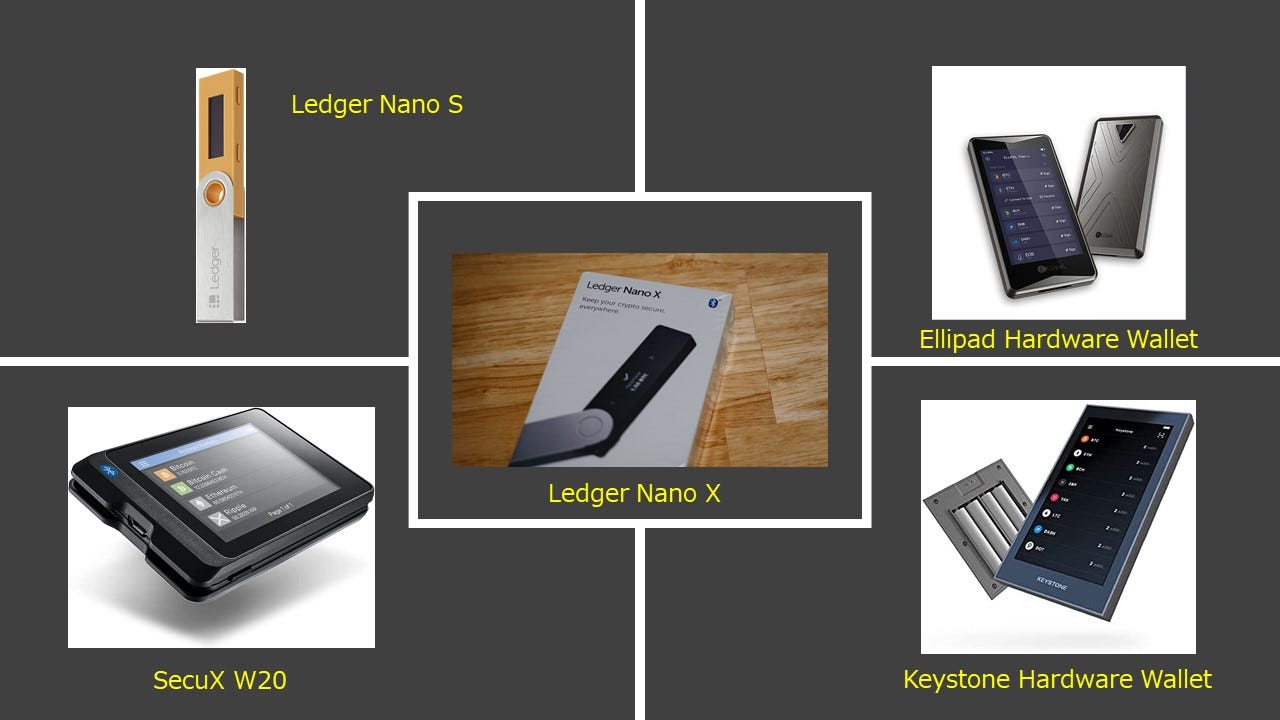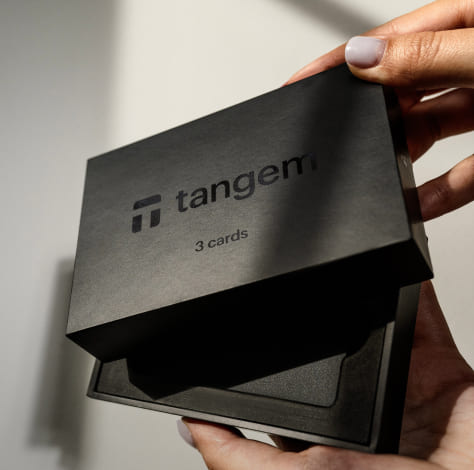
With the rise of digital currencies, ensuring the security of cryptocurrency through hardware wallet encryption has become crucial. AES-256 serves as a widely recognized standard, offering robust protection against unauthorized access. However, understanding its limitations and exploring advanced encryption techniques can provide even greater security. As threats evolve, it’s important to stay informed about the best practices that protect your assets effectively.
What is a Hardware Wallet?
Definition and Purpose
A hardware wallet is a physical device designed to securely store private keys and facilitate safe cryptocurrency transactions. Unlike software wallets that are vulnerable to hacking, hardware wallets offer enhanced security by keeping private keys isolated from internet-connected devices. This isolation significantly reduces the risk of unauthorized access, making hardware wallets a favored choice among cryptocurrency users for safe asset management.
At its core, the primary purpose of a hardware wallet is to safeguard users’ digital assets while providing a user-friendly interface for transaction management. They ensure that users can manage their cryptocurrencies conveniently while maintaining a high level of security. This balance of accessibility and protection is key to the adoption and trust in hardware wallets within the crypto community.
Key Features
After examining the definition and purpose, it is important to consider the key features that make hardware wallets stand out. These features provide users with enhanced control and security over their digital assets:
- Secure Storage: Hardware wallets store private keys offline, minimizing the risk of theft.
- Encryption Standards: Many wallets use strong encryption methods like AES-256 to protect sensitive information.
- Multi-currency Support: They often support various cryptocurrencies, providing versatility for users.
- User-friendly Interface: Many devices come with intuitive interfaces for easy management.
- Backup and Recovery: Most hardware wallets offer recovery options to restore access in case of loss.
The combination of these features ensures that users have a reliable and safe method to manage their cryptocurrency assets.
Wallet security is of utmost importance, and hardware wallets excel in providing substantial protection against threats. With the ability to conduct transactions safely without exposing private keys, they allow users to engage with their assets confidently. Additionally, many models include biometric authentication or secure PIN protection for added layers of security. The adoption of advanced encryption technology further bolsters the defense against potential cyber threats.
- Physical Security: Devices are built to be tamper-resistant.
- Firmware Updates: Regular updates improve security and functionality.
- Cross-platform Compatibility: Many work seamlessly with different operating systems and devices.
- Open-source Firmware: Some wallets offer open-source options for transparency and community trust.
- Device Recovery Options: Users can restore wallets if lost or damaged.
The integration of these elements is fundamental to the overall trust and appeal of hardware wallets in the cryptocurrency ecosystem.
Encryption Standards Overview
While encryption is fundamental to securing sensitive data, it operates within a framework of established standards that dictate how encryption should be implemented. These standards ensure that encryption technologies offer a consistent level of security and interoperability across various platforms and devices. The importance of adhering to recognized encryption standards cannot be overstated, as they foster trust and reliability in digital transactions and communications.
While numerous encryption algorithms exist, certain standards have gained prominence due to their extensive testing and proven effectiveness. These standards, such as AES (Advanced Encryption Standard), have been widely adopted for protecting data in transit and at rest. Understanding these encryption standards is important for evaluating the security features of hardware wallets and other security tools.
Importance of Encryption
Encryption plays an important role in safeguarding sensitive information against unauthorized access. By converting data into a format that cannot be easily interpreted without the appropriate key, encryption helps protect users’ financial assets, personal data, and privacy. In an era of increasing cyber threats and data breaches, ensuring robust encryption practices is more important than ever to maintain user confidence and security.
The impact of effective encryption extends beyond individual data protection; it contributes to broader security protocols in industries such as finance, healthcare, and technology. By using strong encryption standards, organizations can mitigate risks associated with data loss and theft, thereby enhancing their overall security posture and compliance with regulations.
Common Encryption Standards
Encryption is categorized by various standards that define how the encryption processes should be executed. Among the most prevalent are AES-256, RSA, and Twofish, each with its strengths and applications. AES-256, in particular, is favored for its strong security and efficiency, making it a standard choice for protecting highly sensitive data, such as cryptocurrency wallets. RSA is commonly used for secure data transmission, providing asymmetric encryption that facilitates secure key exchange over untrusted networks, while Twofish serves as an alternative for applications requiring a fast and flexible encryption solution.
To better appreciate the landscape of encryption, examining these common standards reveals important distinctions in their functionality and security levels. AES-256 stands out for its resilience against brute-force attacks, while RSA offers the advantage of public key infrastructure that simplifies secure communications. Twofish, though less widely adopted, still provides robust performance for certain applications, showcasing the diversity in encryption solutions available today.
Understanding AES-256
Now, AES-256, or Advanced Encryption Standard with a key size of 256 bits, is a symmetric encryption algorithm widely regarded for its robust security. It is an upgrade from its predecessors, AES-128 and AES-192, providing a larger key space that significantly enhances its resistance against brute-force attacks. AES-256 is utilized in various applications, from encrypting sensitive government data to securing transactions in blockchain technology.
What is AES-256?
Around the globe, AES-256 is recognized as one of the most secure encryption standards today. It operates using a symmetric key algorithm, meaning the same key is employed for both encryption and decryption of data. This aspect allows for fast and efficient processing, making it suitable for applications requiring quick access to secured information without compromising security.
Advantages of AES-256
Any implementation of AES-256 offers significant advantages, primarily due to its high level of security and efficiency. Its large key size makes it resistant to *exhaustive search attacks*, providing a security margin that diminishes the likelihood of successful hacking attempts. Furthermore, AES-256 has been extensively analyzed and is endorsed by various security standards and organizations, ensuring its reliability in protecting sensitive data.
At the same time, the advantages of AES-256 extend beyond mere security. It is highly optimized for performance across various platforms, making it adaptable for both hardware and software applications. This adaptability allows developers to integrate AES-256 into diverse systems effortlessly. Combine this with its widespread acceptance, and AES-256 stands as a compelling choice for anyone seeking to safeguard their data against unauthorized access, thereby ensuring a strong defense against potential threats.
Beyond AES-256: Emerging Standards
For many organizations and individuals, AES-256 remains a strong standard for encryption. However, ongoing advancements in computing and cryptography are leading to the development of emerging encryption standards that may provide enhanced security and efficiency. Techniques such as post-quantum cryptography are gaining traction as they promise to secure data against threats posed by future quantum computing capabilities, which could render current encryption methods vulnerable.
For example, lattice-based cryptography, one of the post-quantum techniques, has shown significant potential in offering robust encryption that withstands quantum attacks. Researchers are actively exploring these next-generation techniques to integrate them into existing systems, ensuring a high level of security alongside operational efficiency.
Next-Generation Encryption Techniques
Below are various promising next-generation encryption techniques that are being researched and developed:
| Technique | Description |
|---|---|
| Lattice-Based Cryptography | Utilizes complex mathematical structures to provide security against quantum threats. |
| Multivariate Polynomial Cryptography | Employs systems of equations to create hard-to-solve problems, resistant to quantum attacks. |
| Hash-Based Signatures | Generates digital signatures through hash functions, offering better resistance to certain attacks. |
Comparative Analysis
Before choosing an encryption standard, it is important to conduct a comparative analysis of the available options. Evaluating the underlying principles, performance metrics, and vulnerability to attacks helps organizations make informed decisions. The table below summarizes key differences between AES-256 and emerging standards.
| Standard | Features |
|---|---|
| AES-256 | Established standard, widely supported, but potentially vulnerable to quantum computing. |
| Lattice-Based | Resilient against quantum threats, but still in research phase without wide adoption. |
| Multivariate Polynomial | Strong resistance to quantum attacks, but lacks maturity in implementations. |
Emerging techniques offer solutions designed to overcome the limitations of existing standards like AES-256. As quantum computing progresses, the prevailing importance lies in ensuring that encryption methodologies are not only effective but also adaptable to evolving threats. Integrating these new standards could prove advantageous for securing sensitive data against increasingly sophisticated attack vectors.
| Emerging Standard | Key Advantages |
|---|---|
| Post-Quantum Standards | Designed to resist attacks from quantum computers, ensuring data longevity and security. |
| Hash-Based Techniques | Leverage existing hash functions for strong digital signatures and lower computational requirements. |
User Considerations for Hardware Wallets
After selecting a hardware wallet, users must consider various factors, including usability, security features, and compatibility with multiple cryptocurrencies. Different models offer varying levels of security measures, such as biometric access, secure chip technology, and recovery seed options. A user-friendly interface can significantly enhance the experience, especially for those new to crypto storage. Balancing security with convenience is vital, as many users may be tempted to prioritize ease of use over robust security protocols.
Choosing the Right Wallet
By analyzing your specific needs and preferences, you can choose a hardware wallet that suits you best. Factors to consider include the cryptocurrencies you intend to store, the number of accounts you plan to manage, and your requirement for portability. Researching reputable brands, reading reviews, and comparing features can aid in making an informed decision, ensuring that your digital assets are protected against threats while still being accessible when needed.
Security Best Practices
Wallet security starts with safeguarding your recovery seed, as it can grant access to your assets. Always keep this information offline, stored in a secure location, and never share it with anyone. It’s also wise to set a strong PIN or password for your wallet to add an extra layer of security. Regularly updating your wallet’s firmware can address potential vulnerabilities, making it more resistant to hacking attempts. Users should be cautious of phishing attacks and only use official sources to download software or updates.
Practices such as enabling two-factor authentication where possible can further enhance wallet security. Be wary of public Wi-Fi networks when accessing your wallet, and consider using a VPN for an additional security layer. Backing up your wallet regularly and maintaining physical security for your device are also vital to prevent loss or theft. Prioritizing these measures will significantly reduce the risk of unauthorized access and ensure the safety of your digital assets.
Future of Encryption in Hardware Wallets
Your hardware wallets are poised to evolve with new encryption standards, focusing on enhanced security and usability. Emerging technologies like post-quantum encryption and multi-signature protocols are gaining traction, aiming to preemptively address the threats posed by advancements in quantum computing. As user demands for superior protection grow, manufacturers are expected to adopt robust frameworks that integrate advanced cryptography, ensuring that hardware wallets remain secure against evolving cyber threats.
Trends and Predictions
After analyzing the current landscape, it’s evident that hardware wallet encryption will incorporate more adaptive mechanisms to counter emerging vulnerabilities. Trends indicate an increasing integration of machine learning algorithms to detect fraudulent behavior and potential threats in real time. Moreover, the shift towards decentralized finance (DeFi) applications will necessitate hardware wallets to incorporate flexible encryption models that support diverse blockchain technologies, enhancing both compatibility and security.
Impact on Users
Any advancements in hardware wallet encryption will significantly impact users, offering enhanced protection for their assets while simplifying the management of their digital keys. With stronger encryption methods, users will experience less anxiety about the safety of their cryptocurrencies, empowering them to engage more actively in the digital economy. However, the adoption of these advanced features may also require users to adapt to new security practices and workflows.
With the introduction of advanced encryption standards, users can expect a more secure and user-friendly experience. These developments will not only bolster asset safety but also encourage confidence in digital currency transactions. However, there is a risk that users might struggle to keep up with new technologies and processes, leading to potential mismanagement of their encryption keys if education and updates are not effectively communicated. Staying informed will be key to reaping the benefits while managing the associated challenges.







